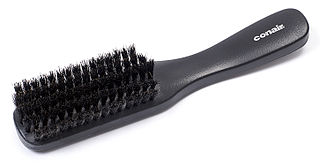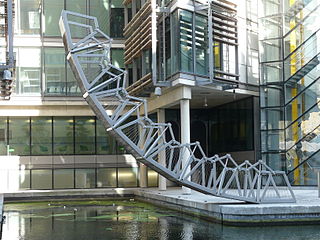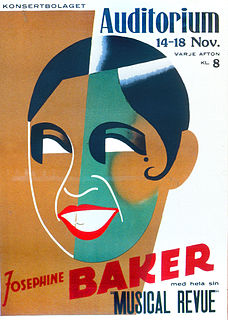
A hairstyle, hairdo, or haircut refers to the styling of hair, usually on the human scalp. Sometimes, this could also mean an editing of facial or body hair. The fashioning of hair can be considered an aspect of personal grooming, fashion, and cosmetics, although practical, cultural, and popular considerations also influence some hairstyles. The oldest known depiction of hair braiding dates back about 30,000 years. In ancient civilizations, women's hair was often elaborately and carefully dressed in special ways. In Imperial Rome, women wore their hair in complicated styles. From the time of the Roman Empire until the Middle Ages, most women grew their hair as long as it would naturally grow. During the Roman Empire as well as in the 16th century in the western world, women began to wear their hair in extremely ornate styles. In the later half of the 15th century and on into the 16th century a very high hairline on the forehead was considered attractive. During the 15th and 16th centuries, European men wore their hair cropped no longer than shoulder-length. In the early 17th century male hairstyles grew longer, with waves or curls being considered desirable.

A handlebar moustache is a moustache with particularly lengthy and upwardly curved extremities; a shorter version is named the Emilio handlebar. These moustache styles are named for their resemblance to the handlebars of a bicycle. It is also known as a spaghetti moustache, because of its stereotypical association with Italian men. The Handlebar Club humorously describes the style as "a hirsute appendage of the upper lip and with graspable extremities".

The Tim Hortons Brier, or simply the Brier, is the annual Canadian men's curling championship, sanctioned by Curling Canada. The current event name refers to its main sponsor, the Tim Hortons coffee and donut shop chain. "Brier" originally referred to a brand of tobacco sold by the event's first sponsor, the Macdonald Tobacco Company.

A hair brush is a stick brush with rigid or soft spokes used in hair care for smoothing, styling, and detangling human hair, or for grooming an animal's fur. It can also be used for styling in combination with a curling iron or hair dryer.

A hair iron or hair tong is a tool used to change the structure of the hair using heat. There are three general kinds: curling irons, used to make the hair curly, straightening irons, commonly called straighteners or flat irons, used to straighten the hair, and crimping irons, used to create crimps of the desired size in the hair.

Root nodules are found on the roots of plants, primarily legumes, that form a symbiosis with nitrogen-fixing bacteria. Under nitrogen-limiting conditions, capable plants form a symbiotic relationship with a host-specific strain of bacteria known as rhizobia. This process has evolved multiple times within the legumes, as well as in other species found within the Rosid clade. Legume crops include beans, peas, and soybeans.
Jillian "Jill" Brothers is a Canadian curler. Mouzar was born in Liverpool, Nova Scotia and now resides in Bedford, Nova Scotia.

A ringlet is a type of hairstyle. Ringlets are often also known as tube curls or corkscrew curls. It is achieved by wrapping a lock of hair around the length of a thin curling iron or can be sported naturally by people with sufficiently tightly curled hair. The curls can also be achieved by hair rollers. Loose ringlets can be created just by twisting wet hair as well.
In the sport of curling, the skip is the captain of a team. The skip determines strategy, and holds the broom in the house to indicate where a teammate at the other end of the curling sheet should aim the stone. The skip usually throws the last two stones in the fourth position, but may play in any other position.

The Rolling Bridge is a type of curling movable bridge completed in 2004 as part of the Grand Union Canal office and retail development project at Paddington Basin, London. Despite the connotation of its name, it is more accurately described as "curling".

An eyelash curler is a hand-operated mechanical device for curling eyelashes for cosmetic purposes. Usually only the upper eyelashes are curled.

Hair straightening is a hair styling technique used since the 1890s involving the flattening and straightening of hair in order to give it a smooth, streamlined, and sleek appearance. It became very popular during the 1950s among black males and females of all races. It is accomplished using a hair iron or hot comb, chemical relaxers, Japanese hair straightening, Brazilian hair straightening, or roller set/blowdryer styling. In addition, some shampoos, conditioners, and hair gels can help to make hair temporarily straight.
A digital perm is a perm that uses hot rods with the temperature regulated by a machine with a digital display, hence the name. The process is otherwise similar to that of a traditional perm. The name "digital perm" is copyrighted by a Japanese company, Paimore Co. Hairstylists usually call it a "hot perm."
The Curl Mesabi Classic is an annual bonspiel, or curling tournament, that takes place at Curl Mesabi's venue, the Range Recreation and Civic Center, in Eveleth, Minnesota. The tournament is held in a round-robin format. The men's tournament, started in 2007, is part of the World Curling Tour and has been held every year since. Women were allowed to participate in the men's tournament until 2011, when a separate women's tournament was created. The women's event was not held in 2013. The event is part of the United States Order of Merit System, used to determine the teams which will directly qualify to the National Championships each year. The bonspiel is also part of the Great Lakes Curling Tour.

Marcelling is a hair styling technique in which hot curling tongs are used to induce a curl into the hair. Its appearance was similar to that of a finger wave but it is created using a different method.
The 2012 Iron Trail Motors Shoot-Out was held from December 13 to 16 at the Range Recreation and Civic Center in Eveleth, Minnesota as part of the 2012–13 World Curling Tour. Both the men's and women's events were being held in a round robin format. The purse for the men's event was USD$21,500, and the purse for the women's event was USD$12,500. In the men's final, Tyler George won his second title at Curl Mesabi with a win over last year's runner-up Todd Birr, wrapping up the game with a score of 5–1 in five ends. In the women's final, Jessie Kaufman of Alberta won her first title by defeating last year's runner-up Allison Pottinger with a score of 5–2.

A kiss curl describes a lock of hair curling onto the face and usually plastered down. Although the curl could be flattened with saliva, soap or hair lotion was more typically used.

Frizz is hair that does not align with the surrounding hairs, but stands up or curls independently, creating a fuzzy or irregular texture. The three main causes of frizz are genetics, hair damage, and humidity. Frizzy hair can be seen as a positive or a negative trait depending on the current fashion and one's personal preference. Many hair products, such as gels, pomades, and hair waxes, are designed to reduce frizz.















